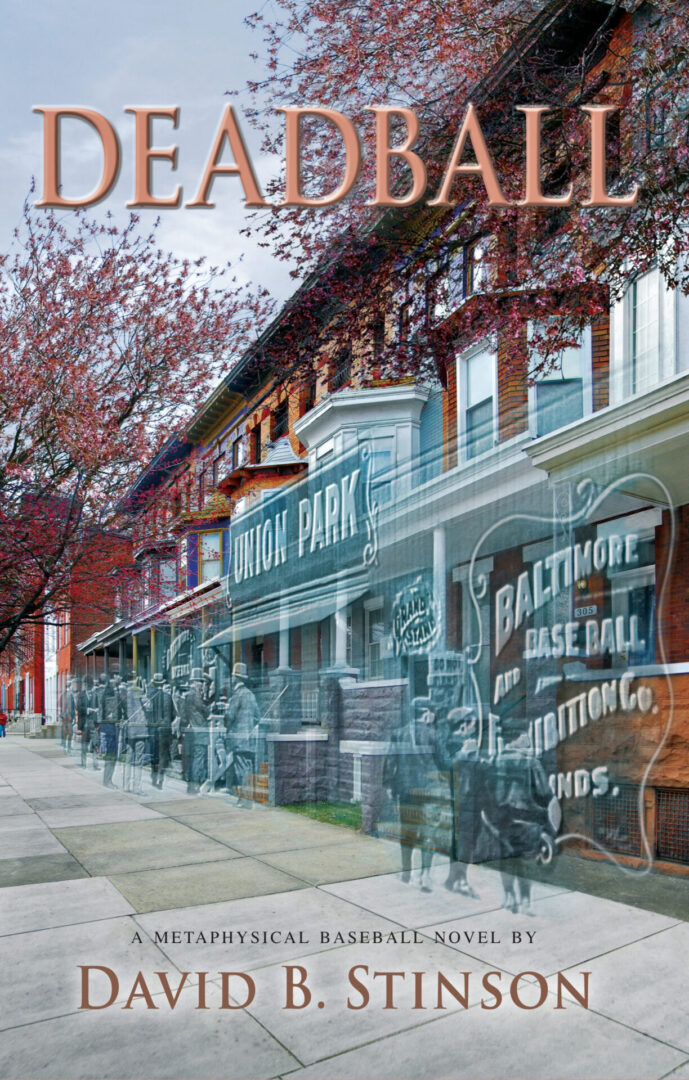Crecent Lake Park is located at 1320 5th Street N in St. Petersburg, Florida. In the southern most part of the park, tucked away in a residential neighborhood, is an important and relatively unspoiled historical baseball site.
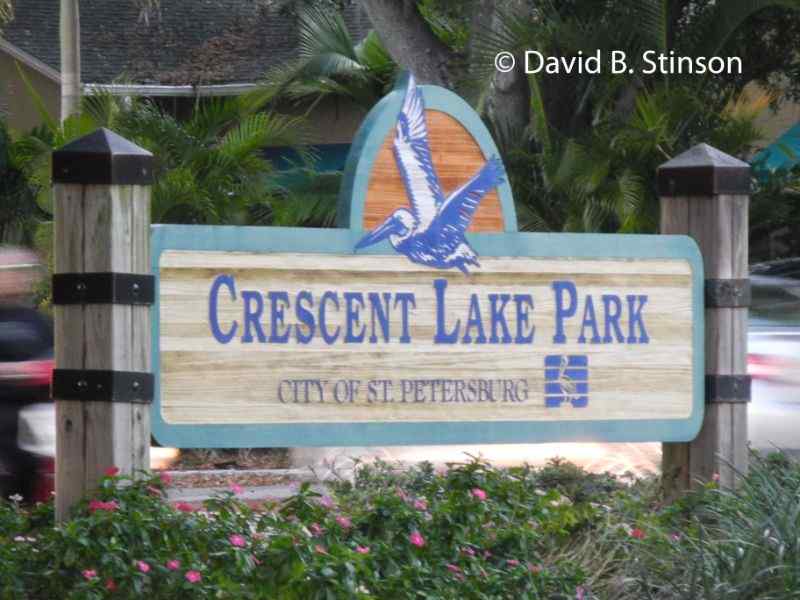
Beginning in 1925, the ball field at Crescent Lake Park was the spring training home of the American League New York Yankees.
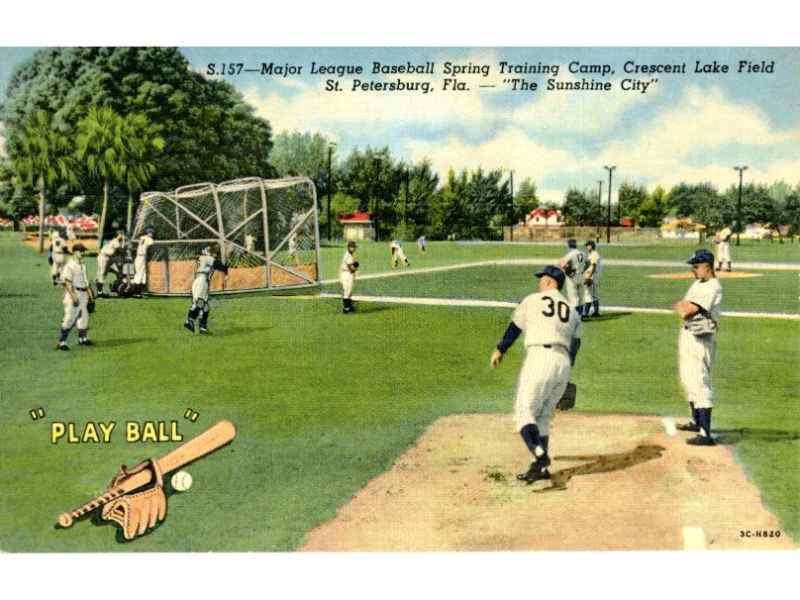
The park is dominated by a large, crescent-shaped lake (hence the name) located in the center of the park.
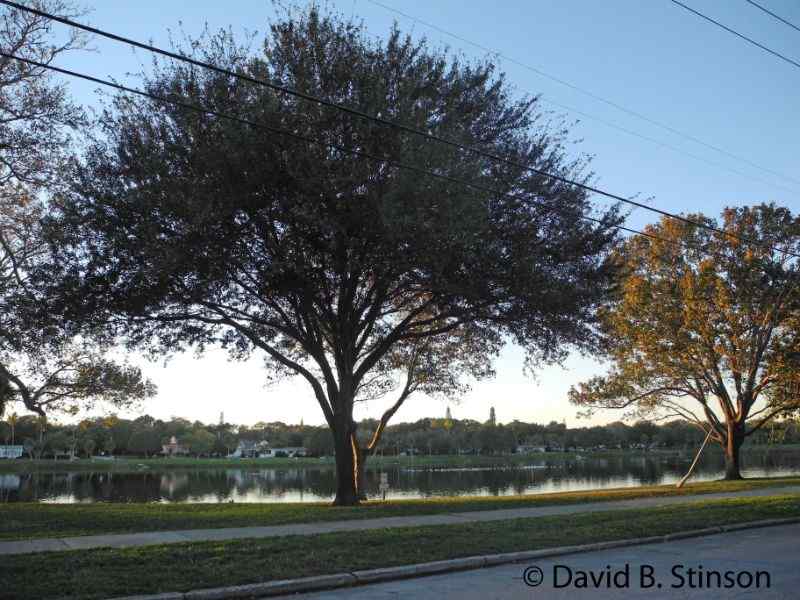
The former training grounds appear much as they did when the Yankees made the field their spring training home.
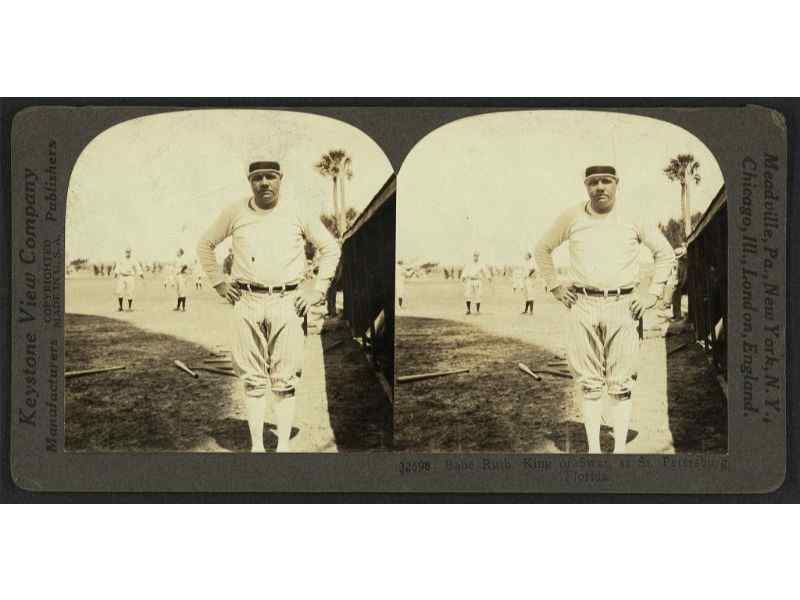
Such greats as Babe Ruth, Lou Gehrig, and the rest of the 1927 World Champion Yankees played on this unassuming ball field.
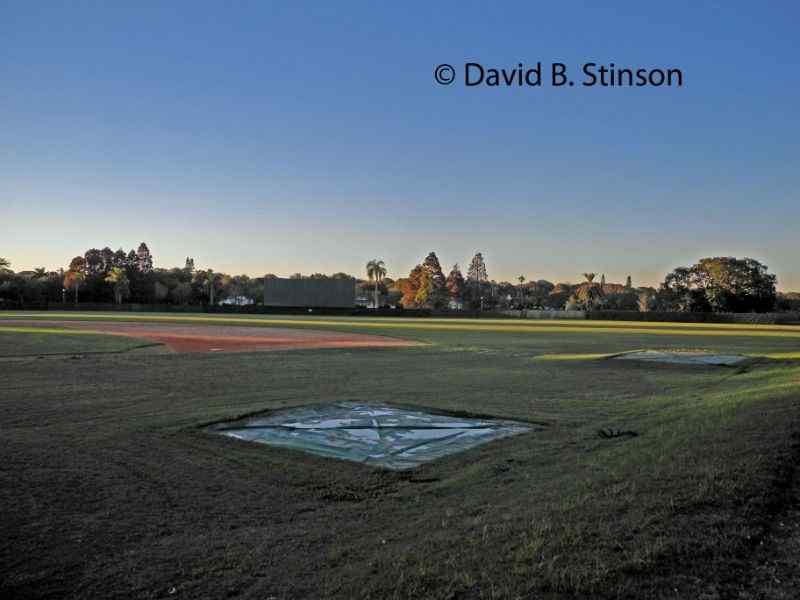
The Yankees trained at Crescent Lake Park until 1942.
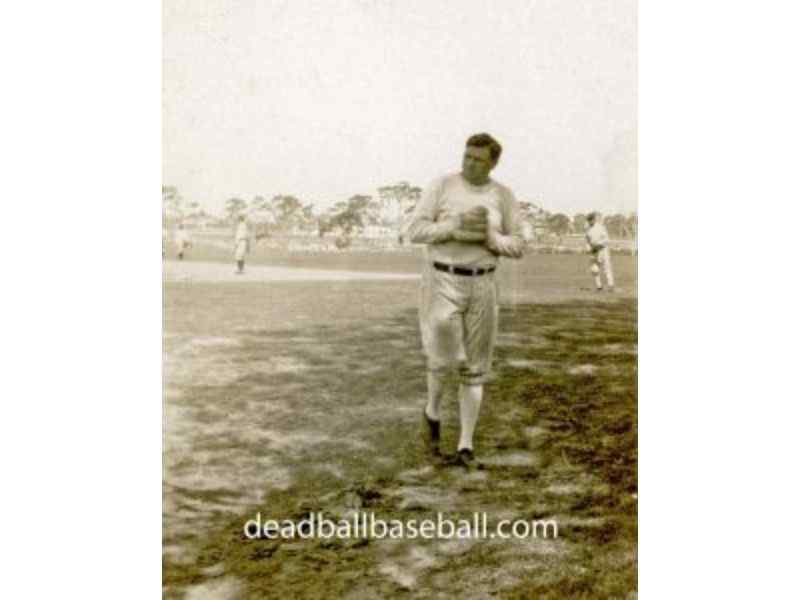
In 1943, when World War II restricted travel for things such as spring training, the Yankees stayed closer to home, training in Atlantic City and Asbury Park, New Jersey. The Yankees returned to Crescent Lake Park in 1946.
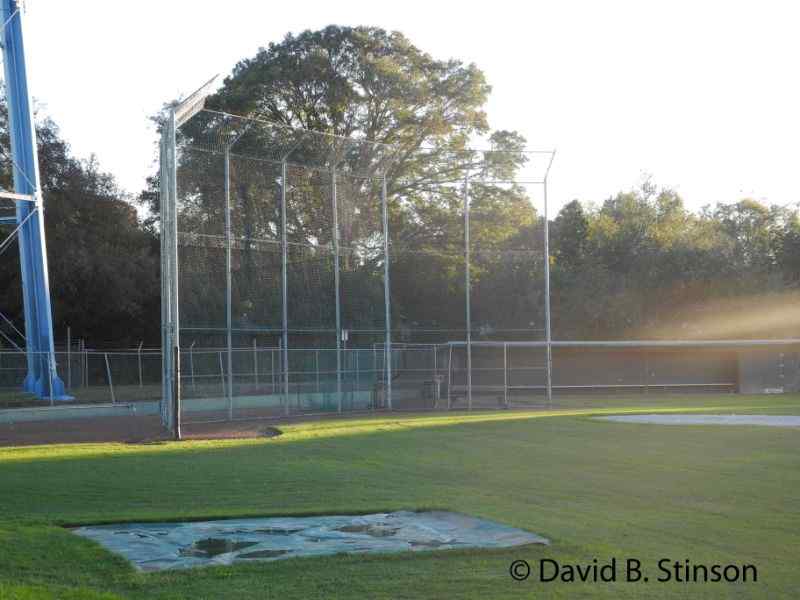
In 1947, the Yankees moved their spring training home games less than two miles south to Al Lang Field, now known as Progress Energy Park.
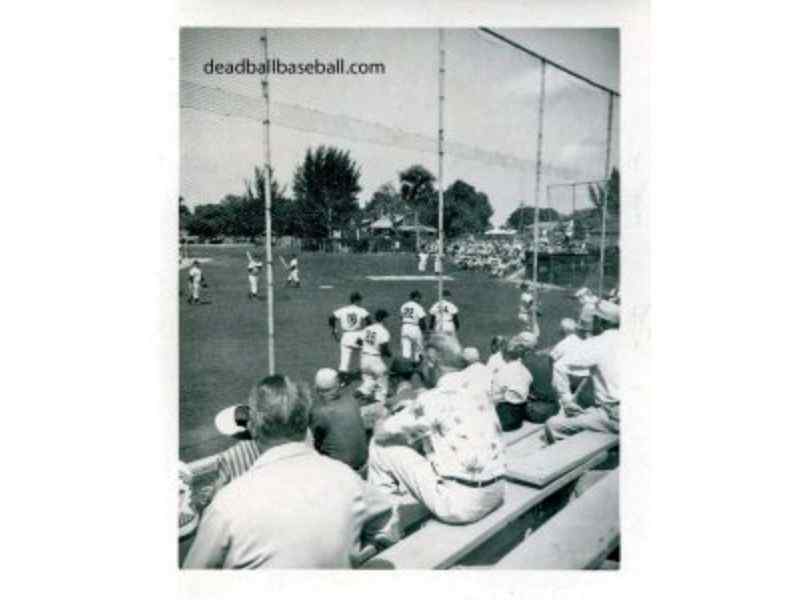
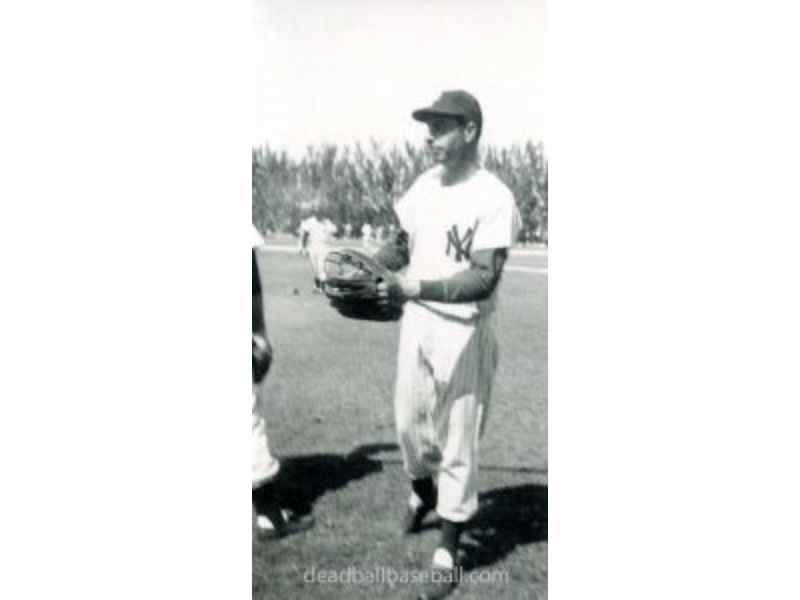
They continued to hold practice sessions at Crescent Lake Park.
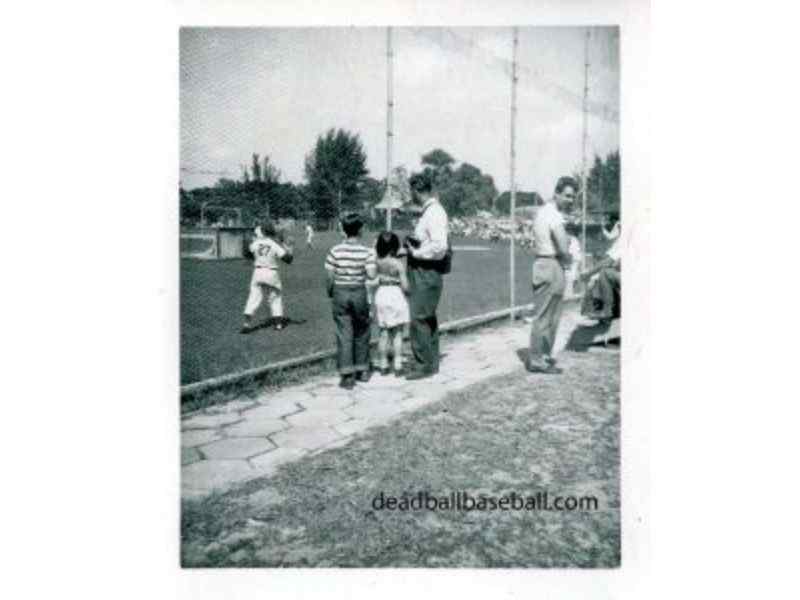
Beginning in 1947, the Yankees shared Al Lang Field with the St. Louis Cardinals.
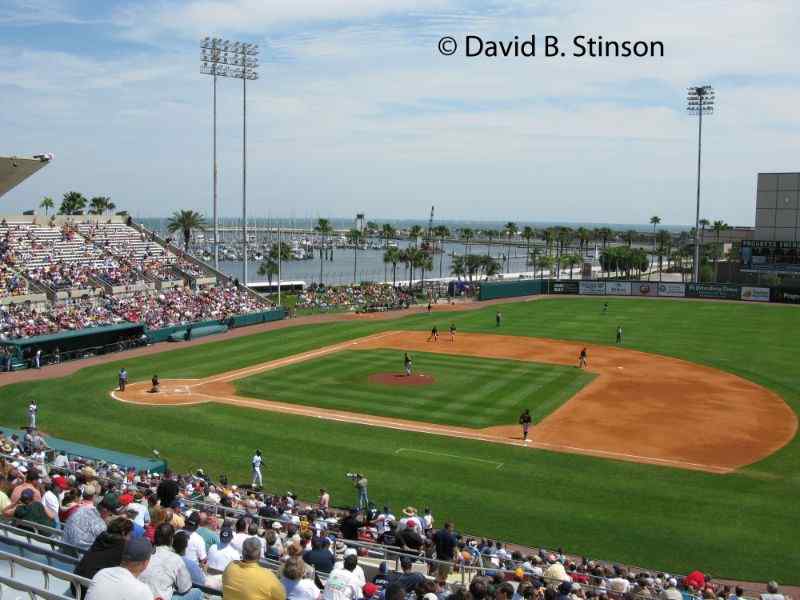
The Yankees continued to use Crescent Lake Park as a spring practice field until 1961, with the exception of 1951 when they trained in Phoenix, Arizona (the Yankees and the New York Giants swapped spring training sites for one season, with the Yankees training that year in Arizona). In 1962 the Yankees departed St. Petersburg and the west coast of Florida for a new stadium built for them on the east coast in Fort Lauderdale.
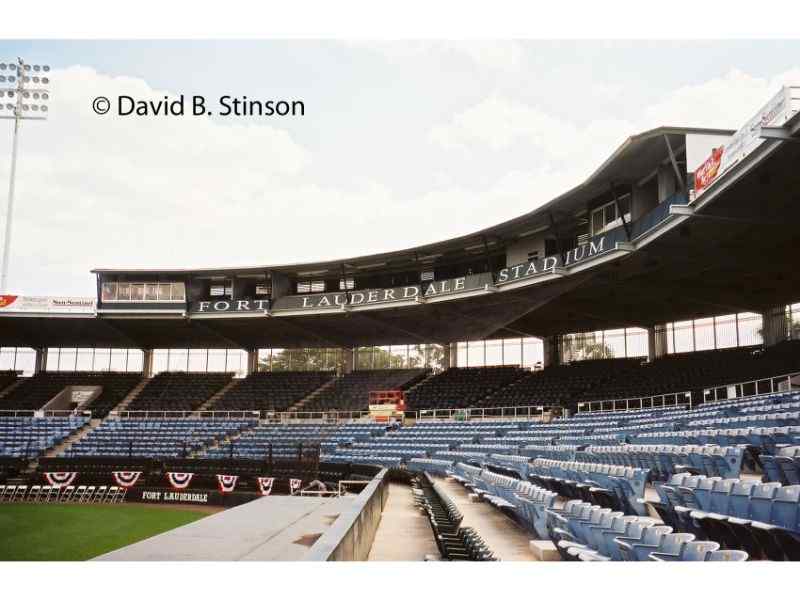
In 1962 the New York Mets took over the spring training at Crescent Lake Park. The Mets trained there through the 1987 season and played their home games at Al Lang Field (renamed Al Lang Stadium in 1977). From 1992 to 1995, the Baltimore Orioles trained at Crescent Lake Park, with their home games being played at Al Lang Stadium.
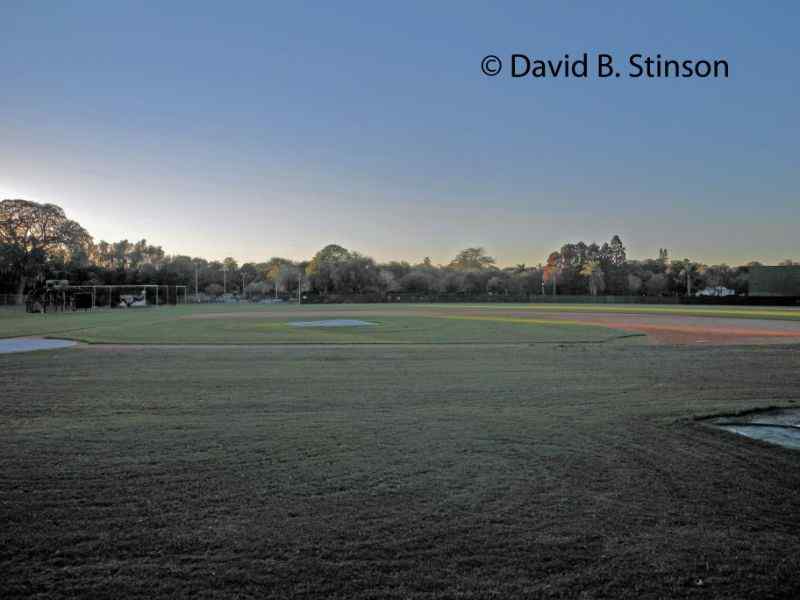
In 1931, Crescent Lake Park was renamed Miller Huggins Field, after the manager of the Yankees who had died in 1929. In 1962, Casey Stengel returned to Crescent Lake as Manager of the New York Mets and, in 1963, the facility was renamed Huggins-Stengel Field. Today it is known as Huggins-Stengel Baseball Complex.
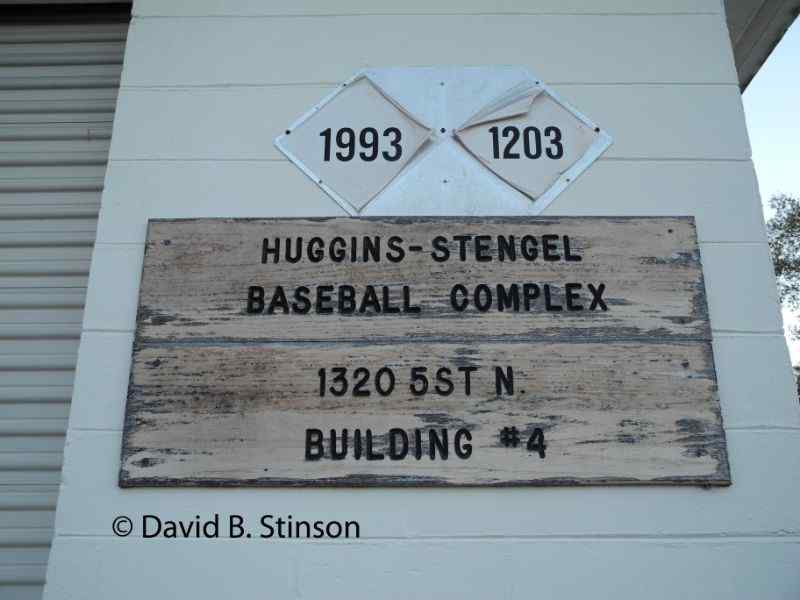
The grandstand at Huggins-Stengel Field was never particularly large, holding only a few thousand fans. Today, seating at the stadium consists only of a few rows of metal bleachers.

A water tower that dominates the skyline at the southern end of the park remains from the time when the field was used for major league spring training.
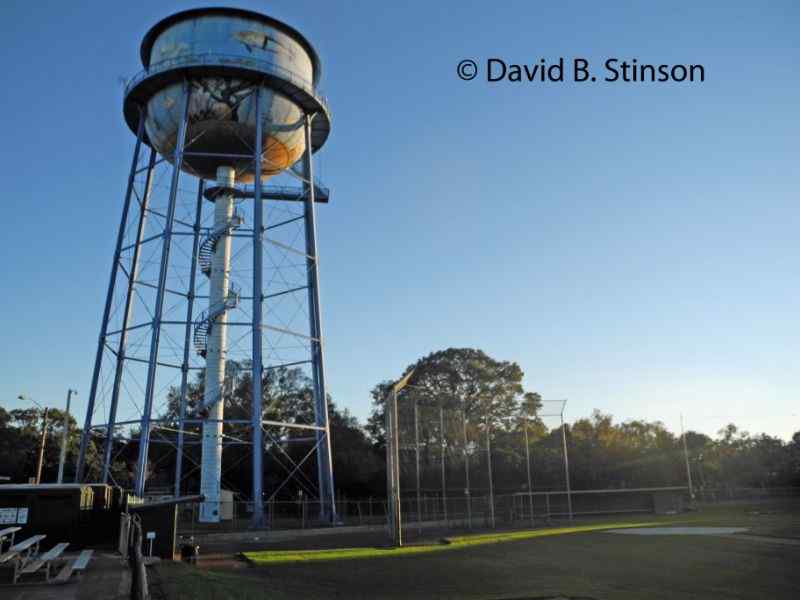
The base of that same water tower is is clearly visible in this postcard photograph of Huggins Field.

Several other structures dating back to the Yankees’ days at Crescent Lake remain as well.
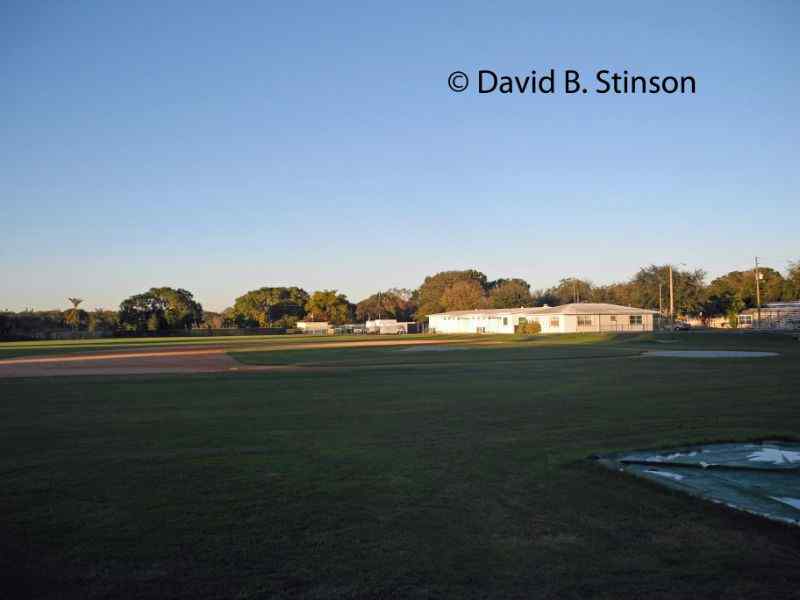
Most notably, one of the original clubhouses remains. Inside the building is one wooden locker purportedly dating back to the time when the Yankees trained there.
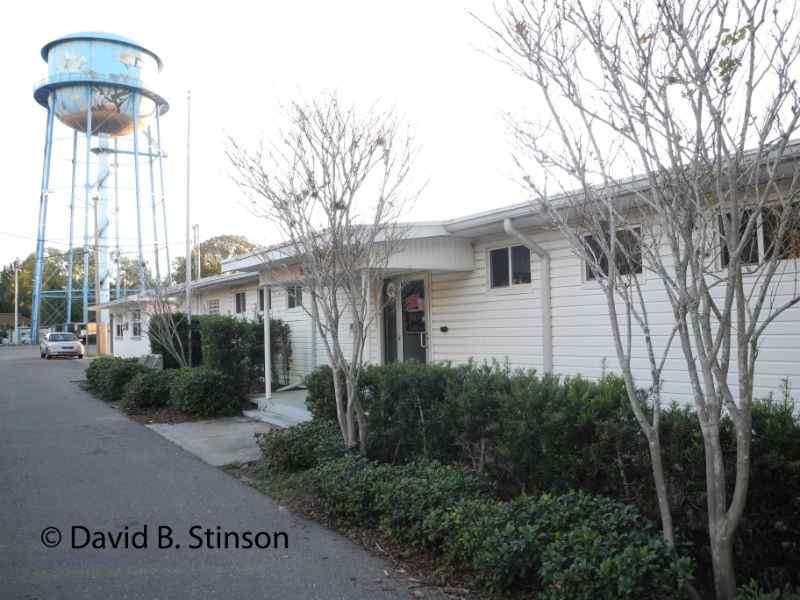
Outside the former club house (Building #4) are two plaques commemorating Miller Huggins and Casey Stengel.
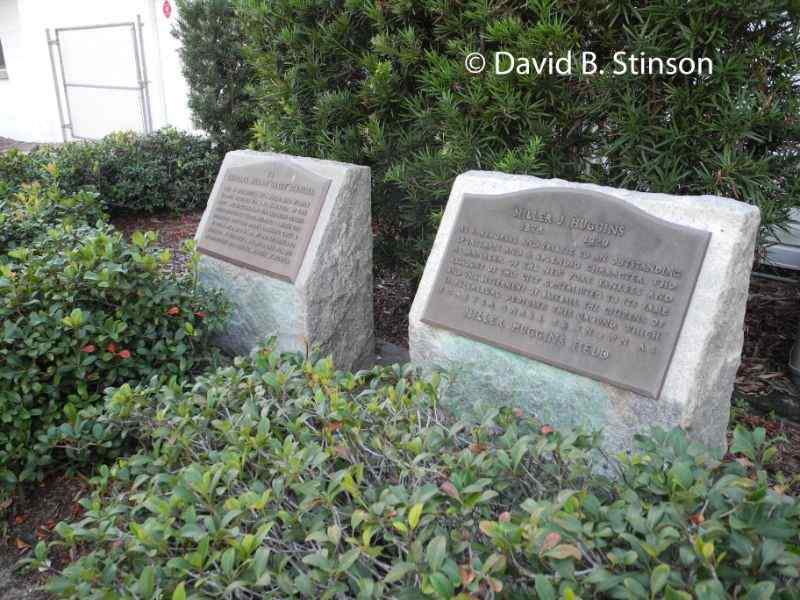
The plaque honoring Miller J. Huggins states: “As a memorial and tribute to an outstanding sportsman and splendid character, who as Manager of the New York Yankees and resident of this city contributed to its fame and the betterment of baseball, the citizens of St. Petersburg dedicate this ground, which forever shall be known as Miller Huggins Field.”
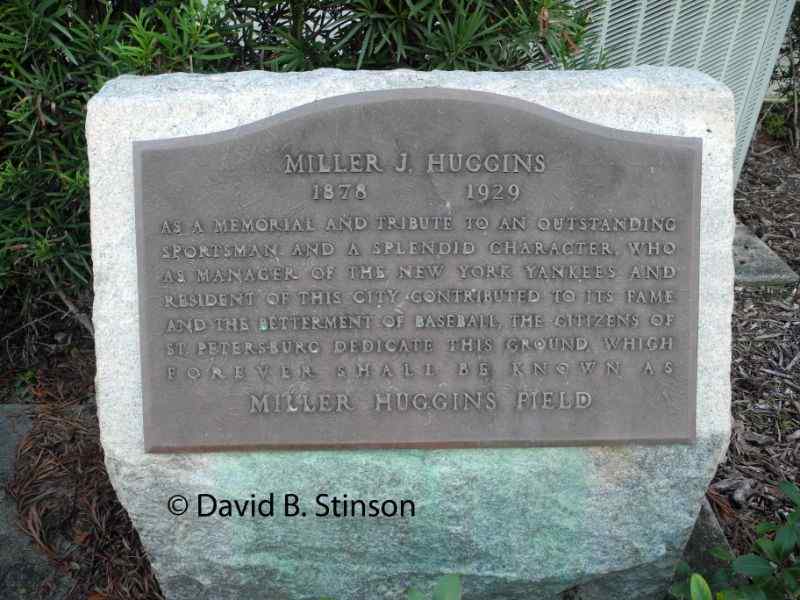
The plaque honoring Charles Dillon “Casey” Stengel states: “One of baseball’s most popular and widely known figures who as Manager of the New York Yankees won ten American League Pennants in 12 years helping to make the Sunshine City the spring training capital of the world and who now has returned as Manager of the New York Mets this plaque is gratefully and affectionately dedicated.”
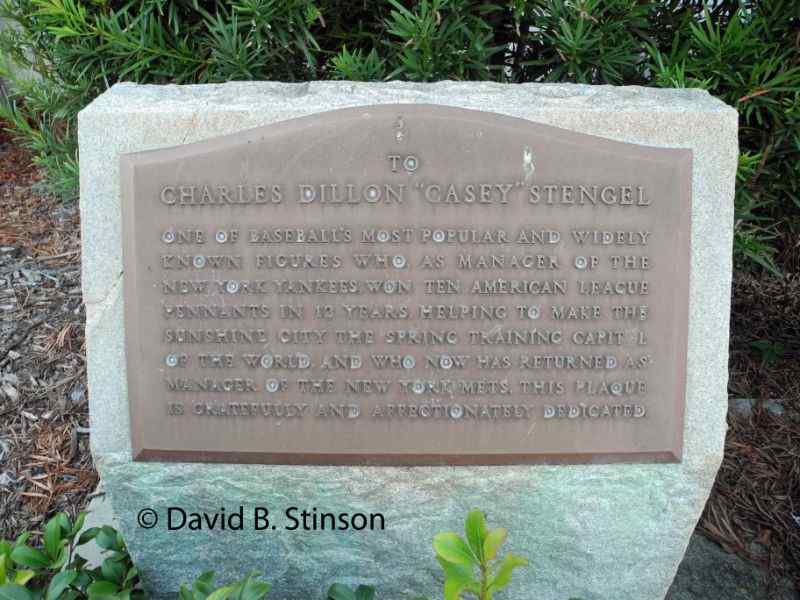
The original flag pole remain as well.
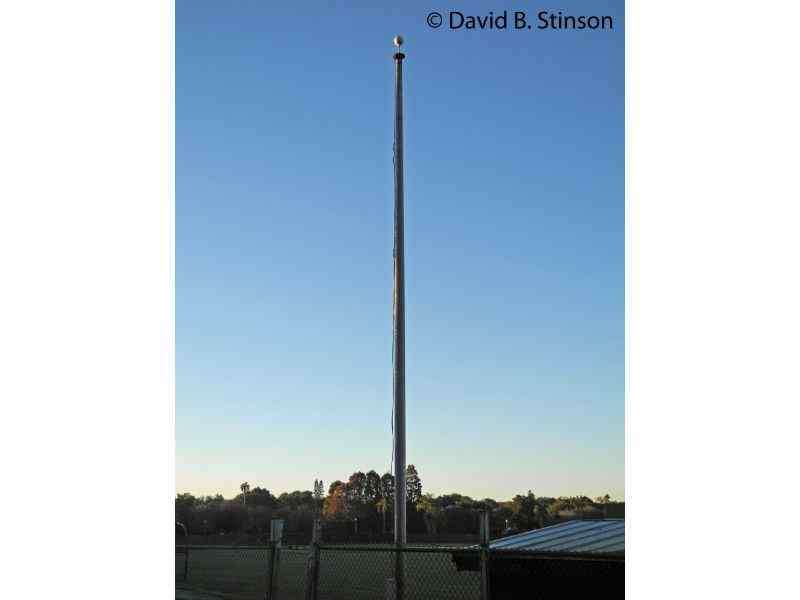
The neighborhood surrounding the park appears much the way it did when the Yankees and Mets practiced at the facility.
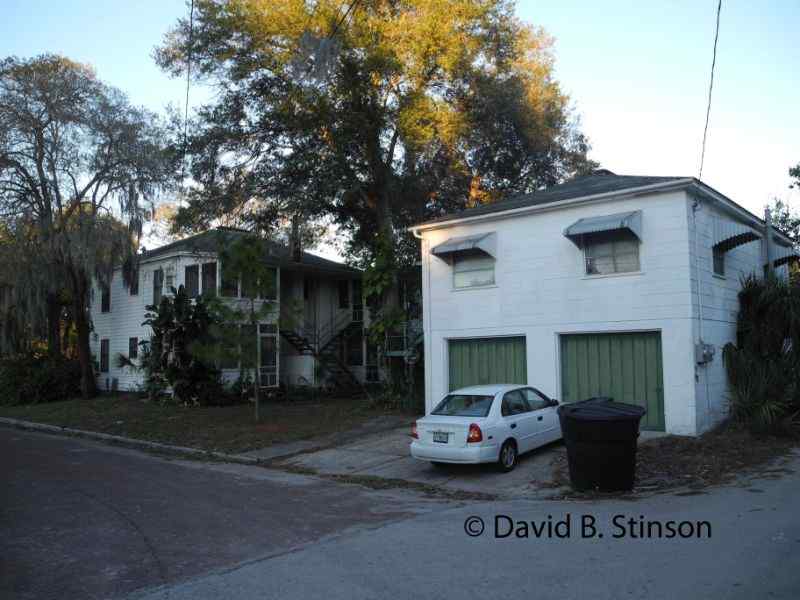
On the facade of Progress Energy Park in downtown St. Petersburg are a series of plaques, some of which mention the history of Crescent Lake Park and Huggins-Stengel Field. Previously, those plaques had been part of the “Jim Healey and Jack Lake Baseball Boulevard,” which included 85 brass home plate plaques that told the story of Major League baseball St. Petersburg. The Boulevard plaques originally were located from First Street S in front of Al Lang Stadium to Central Avenue south along the sidewalk, to 13th Street west, stopping at Tropicana Field.
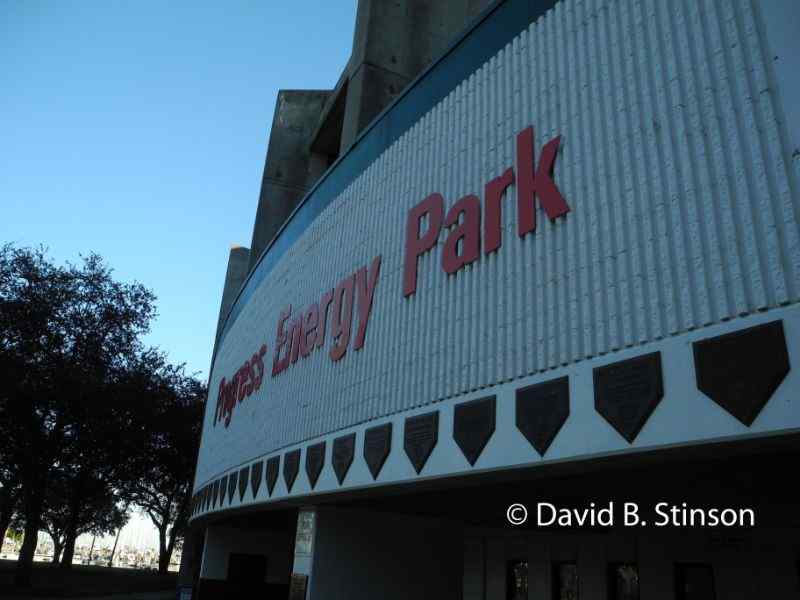
One of the plaques commemorates the Yankees’s first year at Crescent Lake Park.
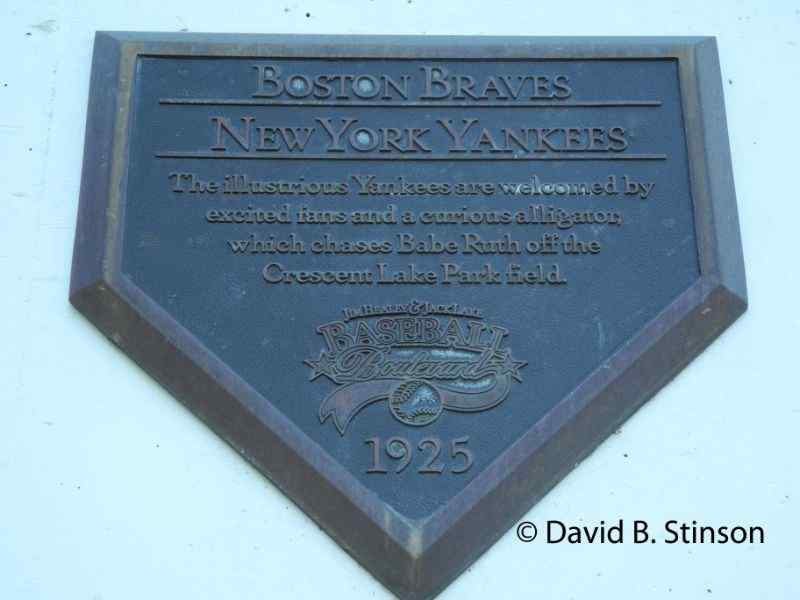
Another plaque commemorates the renaming of Crescent Lake Park Miller Huggins Field in 1931.

A similar plaque honors the return of Casey Stengel to Crescent Lake in 1962 as manager of the New York Mets.
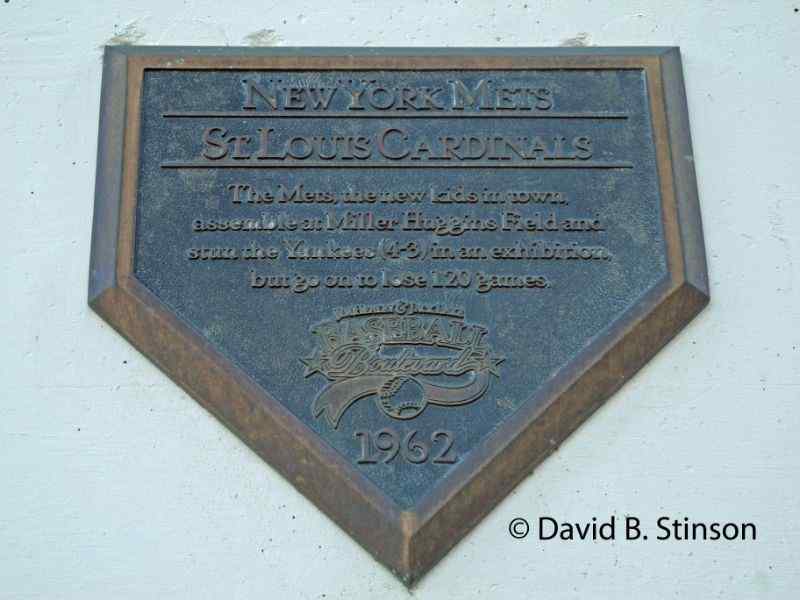
Another plaque commemorates the renaming of the practice field Huggins-Stengel Field in 1963.
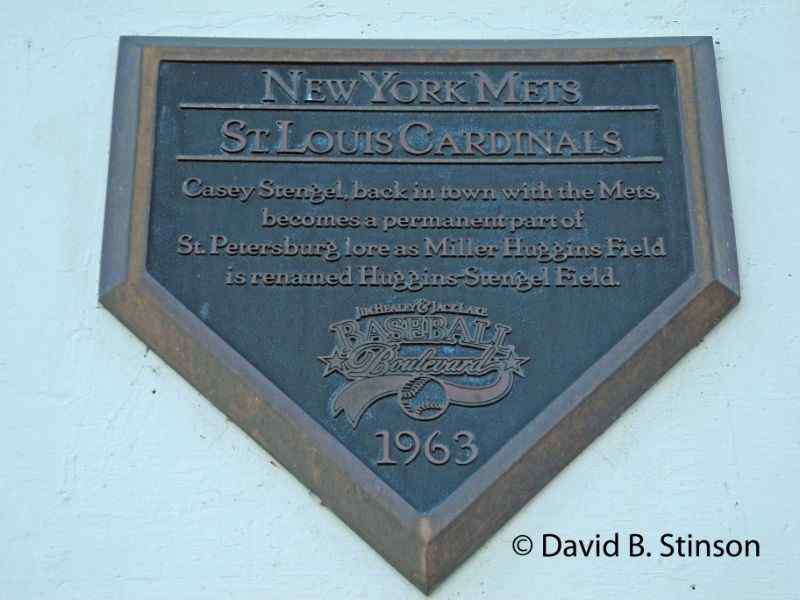
Huggins-Stengel Baseball Complex is used today by high school and college teams for both practice and games. The City of St. Petersburg recognizes the historical significance of the park and seems intent on maintaining it as a baseball facility. This is good news for fans of the game who want to appreciate first hand the national pastime’s rich history.
